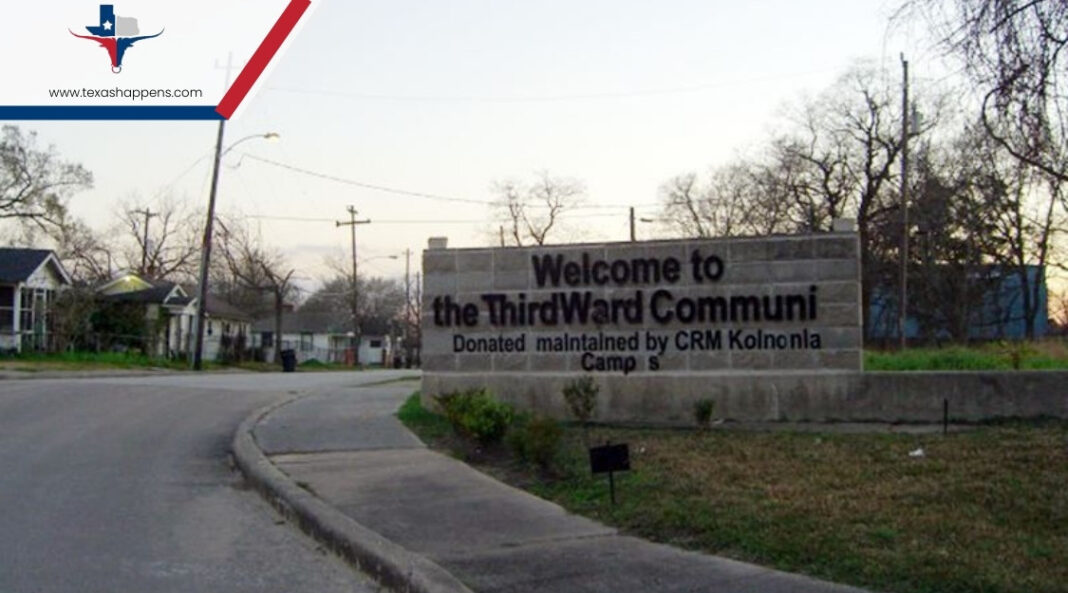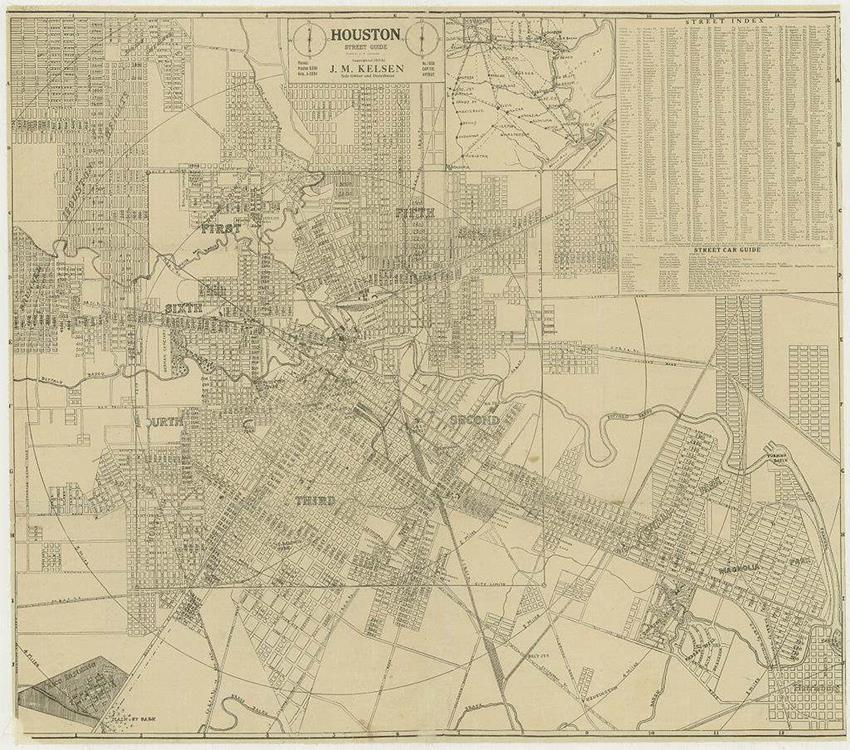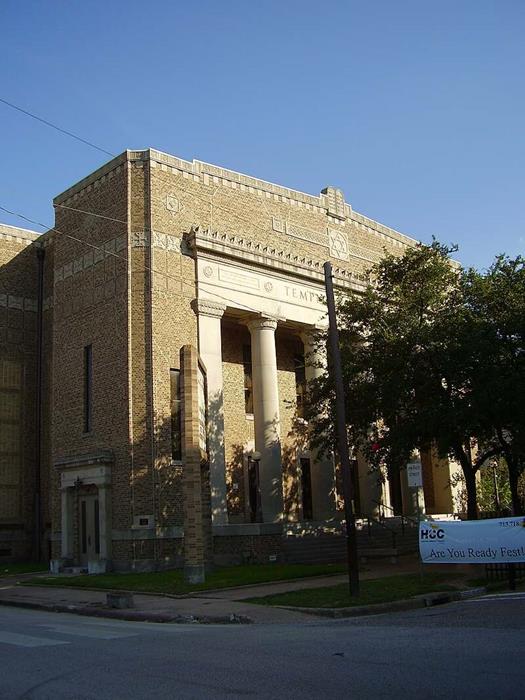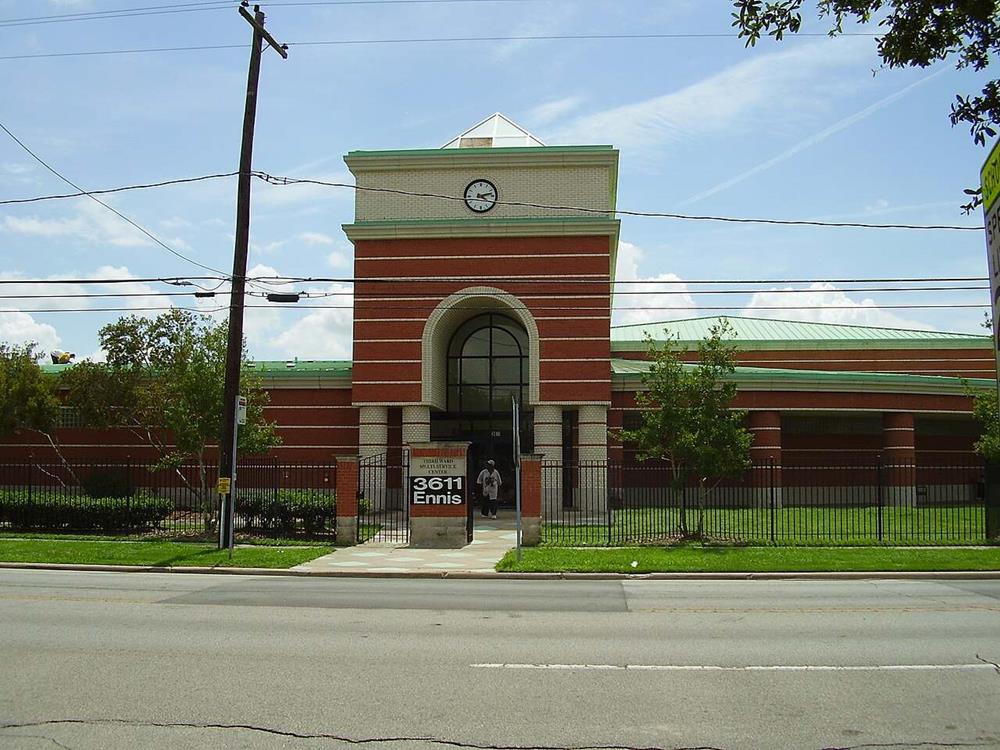Welcome to Third Ward, Houston, a neighborhood rich with history, brimming with culture, and buzzing with modern developments. Known affectionately as “The Tre,” this area serves as a vivid testament to Houston’s dynamic growth and diverse fabric. Whether you’re a local seeking to rediscover your city or a visitor curious about Houston’s roots and vibrant community life, Third Ward offers a unique glimpse into the soul of one of America’s most fascinating cities.
History
Beginnings in the 19th Century
When Houston was founded and segmented into four wards back in 1837, the Southeastern segment was christened the Third Ward. Over the decades, this area has become a cornerstone of African American enterprise and culture. Initially, Third Ward stretched east from Main Street and south from Congress Street.
After the Civil War, it became a new home for former slaves from nearby areas, though initially, they were relegated to the ward’s edges. As racial dynamics shifted and whites moved to suburban locales, African Americans found opportunities to buy homes closer to the community’s core.
In 1872, Reverend John Henry Yates led prominent African Americans to gather $8,000—a substantial sum at the time—to purchase four acres of land. Later, they decided to use this land to build the Emancipation Park, Houston’s first park for African Americans. It also became the proud venue for the annual Juneteenth Celebration, marking a significant chapter in Texas’ history as it commemorates the emancipation of enslaved African Americans.
Early 20th Century
From the 1910s to the 1930s, the African American population in Third Ward burgeoned from about 23,000 to more than 66,000. This also led to the rise in African American-owned businesses, particularly along Dowling Street, which became the bustling commercial heart of Third Ward. Dowling Street also marked its place on the map as a nucleus of the blues movement, where clubs throbbed with the music of artists from the South and Southwest, providing a cultural and musical escape from the oppressive realities of the Jim Crow South.
But the cultural richness of Third Ward didn’t stop at blues. Landmarks like the historic Jack Yates High School, the second African American high school in Houston; the Shape Community Center; the Covington House, known for hosting notable African American guests; and Riverside Hospital, Houston’s first nonprofit hospital serving African Americans. In 1947, Texas Southern University was established, becoming the largest institution in the ward.
The Great Migration
As the 20th century progressed, the Great Migration saw African Americans leaving the South in search of better opportunities in the North. During this period, the Houston Chamber of Commerce even promoted Houston as “Heavenly Houston” to attract black residents to the city. By the 1950s and 1960s, as integration allowed, affluent and middle-class blacks began moving from Third Ward into previously all-white neighborhoods, declining the local business landscape.
Gentrification
By 2017, the effects of gentrification in Greater Third Ward had become markedly visible, driven by its proximity to Houston’s most popular destinations. This shift saw the neighborhood’s demographic change dramatically, with the white population doubling from 2007 to 2017 while the black population decreased by 10%. The new decade of 2020 ushered in further transformations as longtime residents began to voice their concerns over rising housing costs and the gentrification that was reshaping their community.
One of the most symbolic changes occurred with transforming the historic Sears building into The Ion—a $100 million innovation hub intended to foster tech startups and economic growth. This development, while promising growth and revitalization, sparked debates among residents about the future character and accessibility of their neighborhood.
By 2020, the racial makeup of Third Ward had shifted significantly, with the black population decreasing to 45% from 71% in 2010. Concurrently, the white population saw a staggering increase of 170% over the same period. Economic indicators also reflected this upheaval; both the median home price and average rent in Third Ward surged notably from 2010 to 2020, reflecting both the demand and the changing socioeconomic status of the area.
Today, Third Ward is home to about 33,000 residents. Despite urban development pressures and ongoing gentrification efforts, the community remains resilient, with local leaders and residents striving to protect, preserve, and celebrate its rich heritage and cultural legacy. This dedication honors the past and sows seeds for a vibrant, inclusive future, making Third Ward a fundamental part of Houston’s identity and ongoing story of diversity and resilience.
Current Developments
Transforming Spaces
Third Ward is witnessing significant transformations that blend historical charm with modern convenience. At the heart of this evolution is the Emancipation Avenue project, which aims to rejuvenate the area’s main artery, making it more pedestrian-friendly while boosting local businesses. Nearby, the renovation of Emancipation Park has already turned a historic site into a vibrant community hub with upgraded facilities, including a new recreation center and improved outdoor spaces.
Housing and Commercial Growth
The housing scene in Third Ward is also evolving, with developments like the new mixed-use complexes that combine residential, retail, and office spaces. These projects are designed to cater to a growing demand for urban living while supporting local entrepreneurship. Additionally, efforts to preserve affordable housing options are underway to ensure longtime residents can enjoy the benefits of development without displacement.
Educational and Cultural Investments
Significant investments are being made in educational and cultural facilities to enrich the community. Texas Southern University, a cornerstone of Third Ward, is expanding with new buildings and programs to increase educational opportunities in technology and the arts. Moreover, the community is fostering cultural growth through initiatives like the Third Ward Arts District, which supports local artists and promotes cultural tourism.
Environmental and Social Considerations
With development, there’s also a strong focus on sustainability and community welfare. Initiatives like green building practices and community gardens are being implemented to enhance environmental health. Social programs focused on job training and community services are expanding to help residents adapt to and benefit from the neighborhood’s changes.
Landmarks in Third Ward
Third Ward, Houston, is not just rich in history and culture – it’s also home to an array of landmarks that tell the story of this vibrant neighborhood. Here are some of the most significant landmarks that define Third Ward:
Temple Beth Israel
Temple Beth Israel, established in 1859, is the oldest Jewish congregation in Texas. Initially located in Third Ward, its original building is a historical landmark that reflects the diverse cultural fabric of the neighborhood. Although the congregation has moved, the original site remains a significant part of Third Ward’s rich history.
Emancipation Park
Originally purchased by freed slaves in 1872, Emancipation Park is the oldest park in Houston and a cornerstone of Third Ward’s history. It was established as a celebration of Juneteenth, the day that marked the emancipation of slaves in Texas. Today, after extensive renovations, it continues to serve as a community center, hosting cultural events, sports, and recreational activities that bring the community together.
Texas Southern University
Founded in 1947, Texas Southern University (TSU) is one of the largest historically black universities in the United States. Located in the heart of Third Ward, TSU is a hub of education, culture, and leadership, offering numerous programs that reflect the community’s heritage and aspirations. Its campus is a landmark of progress and pride in Third Ward.
Project Row Houses
Project Row Houses is a unique community-based art project that encompasses a city block. It started in 1993 and has since transformed derelict row houses into spaces for art, cultural identity, and community development. This landmark is not only a center for local artists to showcase their work but also a social experiment that intertwines art and housing.
The Eldorado Ballroom
The Eldorado Ballroom, located on Elgin Street, was a famous venue that opened in the early 20th century. It was a significant spot in the African American community, hosting performances by many of the great names in blues and jazz. While it has seen better days, its historical significance makes it a poignant landmark, representing the rich musical heritage of Third Ward.
Riverside Hospital
Founded in 1927, Riverside Hospital was the first nonprofit hospital for African Americans in Houston. It played a crucial role in providing medical care to the black community during segregation. Although no longer in operation as a hospital, the building stands as a testament to the strides made in community health and equality.
The Historic Dowling Street
Dowling Street served as the commercial and entertainment hub of Third Ward during its heyday. It was lined with shops, businesses, and nightclubs that were central to the community’s social and economic life. Today, Dowling Street continues to be recognized for its historical significance as part of the larger narrative of Third Ward.
The Culture in Third Ward
Music
Third Ward is a cultural hotspot where each street corner tells a story, often through music. This neighborhood helped shape the sounds of jazz, blues, and R&B in Houston, with venues that have hosted everyone from local legends to global icons like Beyoncé. It’s a place where music serves as a bridge between past and present.
Art in the Streets
In Third Ward, art is a dialogue with the community. Walk through Project Row Houses, where art installations and community projects turn old buildings into canvases that speak to heritage and current social issues. It’s a living gallery, free and open, inviting everyone to join the conversation.
Community Celebrations
Local festivals like the Houston Livestock Show and Rodeo take on special meaning in Third Ward. Here, they’re not just events but community builders that weave the rich cultural fabric of the neighborhood. Juneteenth at Emancipation Park is particularly impactful, blending history with celebration through music, food, and communal joy.
Significance in Modern Houston
A Cultural Cornerstone
Third Ward’s significance in Houston goes beyond its geographic boundaries; it’s a cultural cornerstone that enriches the entire city. Known for its vibrant music scene, dynamic art movements, and historical depth, Third Ward injects a unique flavor into Houston’s cultural mosaic. Events like the annual Third Ward Art Festival not only draw visitors from across the city but also spotlight local talent, promoting a broader appreciation for the arts rooted in this neighborhood.
Economic and Social Contributions
Economically, Third Ward is becoming a hotspot for growth and innovation. The influx of new businesses and redevelopment projects is revitalizing the area, creating jobs, and attracting investments that benefit the whole city. Socially, Third Ward remains a strong community focused on inclusivity and diversity, values that resonate throughout Houston. Its ongoing community programs aimed at education, health, and housing stability serve as models for city-wide initiatives.
A Resilient and Diverse Neighborhood
Third Ward stands as a testament to resilience and diversity, embodying the spirit of Houston itself. The neighborhood’s ability to maintain its cultural integrity while embracing change is key to its importance to Houston. As the city grows and diversifies, Third Ward’s role in shaping an inclusive urban identity becomes increasingly crucial.
Final Word
As Third Ward continues to evolve, the neighborhood stands at a pivotal intersection of preservation and progress. While the future promises new growth and revitalization, the essence of Third Ward’s rich cultural heritage and community spirit must remain at the heart of all developments. Ensuring that both long-standing residents and newcomers can thrive together will be crucial in maintaining the soul of one of Houston’s most historic neighborhoods.





